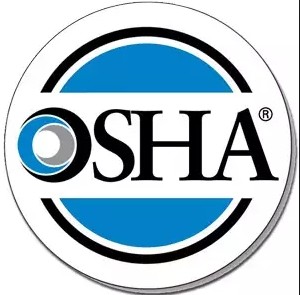The CDC states that hepatitis B virus can survive for at least one week in dried blood on environmental surfaces or contaminated needles and instruments.
Potential Hazard:
Exposure of housekeeping staff to blood or OPIM (other potentially infectious materials) by not using an appropriate or approved disinfectant.
Possible Solutions:
Who determines which disinfectants are appropriate? ![]()
Appropriate or approved disinfectants are determined by the EPA (U.S. Environmental Protection Agency), which oversees the registration of anti-microbial products. A list is provided by the Office of Pesticide Programs that provides the most recent information available from the EPA on registered anti-microbials.
What disinfectants does OSHA recommend?

* OSHA requires that work surfaces be cleaned with an “appropriate disinfectant.” Appropriate disinfectants include a diluted bleach solution and EPA-registered antimicrobial products such as tuberculocides (List B), sterilants (List A), products registered against HIV/HBV (List E), and Sterilants/High Level Disinfectants for (see lists) equipment sterilization.
* Fresh solutions of diluted household bleach made up every 24 hours are also considered appropriate for disinfection of environmental surfaces and for decontamination of sites. Contact time for bleach is generally considered to be the time it takes the product to air dry.
* NOTE: Products registered by the EPA as HIV effective are not necessarily effective against tuberculosis (tuberculocidal) or against the hepatitis B virus (HBV).
* Any of the above products are considered effective when used according to the manufacturer’s instructions, provided the surfaces have not become contaminated with agents or volumes of or concentrations of agents for which higher level disinfection is recommended.
* It is important to emphasize the EPA-approved label section titled “SPECIAL INSTRUCTIONS FOR CLEANING AND DECONTAMINATION AGAINST HIV-1 AND HBV Of SURFACES\OBJECTS SOILED WITH BLOOD\BODY FLUIDS.” On the labels that OSHA has seen, these instructions require: 1) personal protection devices for the worker performing the task; 2) that all the blood must be cleaned thoroughly before applying the disinfectant; 3) that the disposal of the infectious waste is in accordance with federal, state, or local regulations; 4) that the disposal of the infectious waste is in accordance with federal, state, or local regulations; and 5) that the surface is left wet with the disinfectant for 30 seconds for HIV-1 and 10 minutes for HBV. OSHA would expect all such disinfectants to be used in accordance with their EPA-approved label instructions. OSHA Instruction CPL 2-2.69 , Enforcement Procedures for the Occupational Exposure to Bloodborne Pathogens.
* OSHA has commented on disinfectants in the following interpretation letters and documents:
o Disinfectants claiming efficacy against the Hepatitis B virus . (1997, April 1).
o OSHA’s policy regarding the use of EPA-registered disinfectants . (1999, July 15).
o OSHA’s FAQs for Bloodborne Pathogens .

